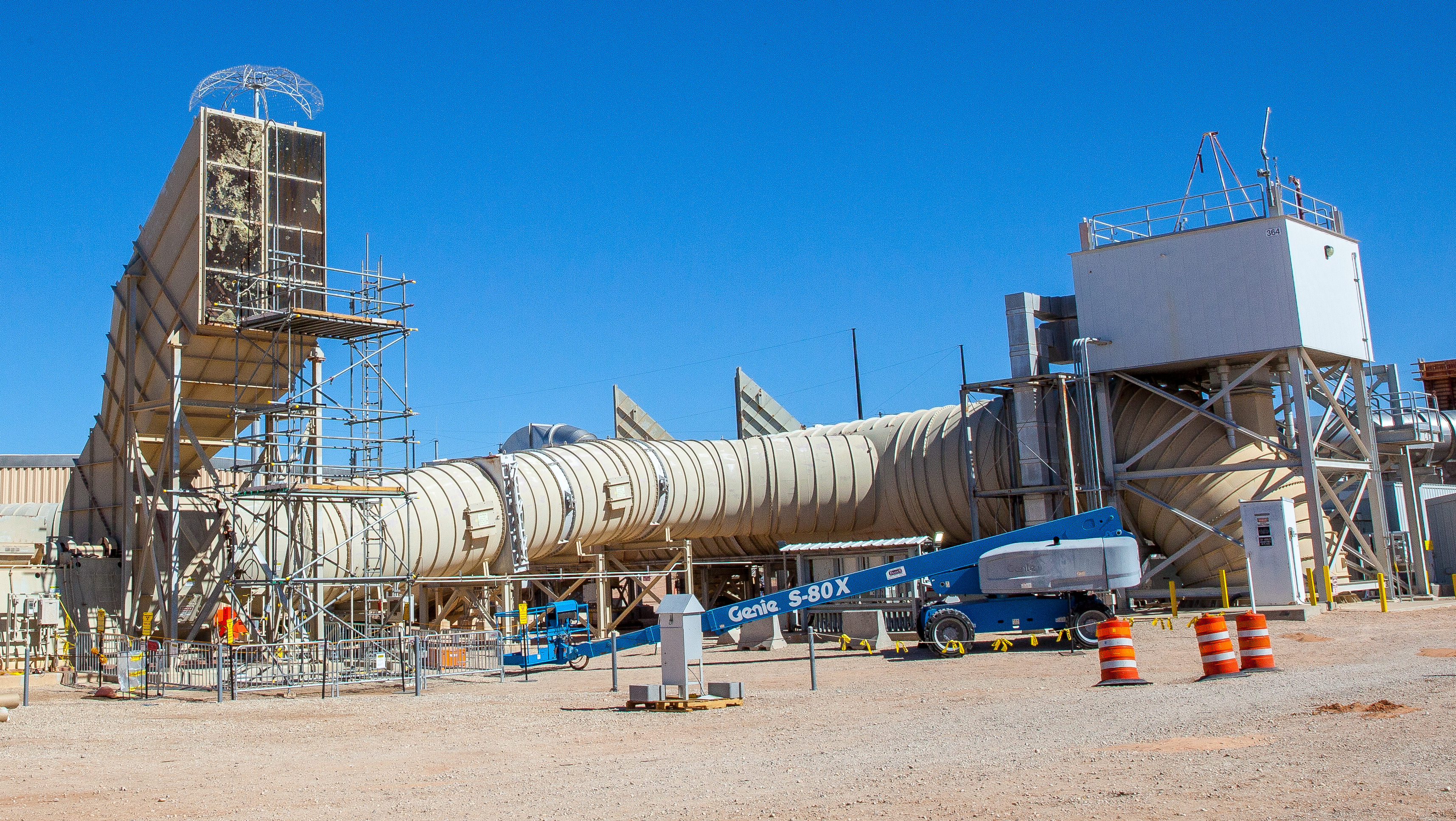VENTILATION SYSTEM
Four large vertical shafts lead to the Waste Isolation Pilot Plant’s 2,150-foot deep underground disposal facility, providing ventilation. Large fans located on the surface draw outside air down the shafts and circulate it throughout the underground, before the air exits through a dedicated exhaust shaft.
Since a radiological event in 2014, the ventilation system has been operated in filtration mode, in which all air passes through a bank of high-efficiency particulate air (HEPA) filters before it is exhausted to the surface atmosphere. Because of the properties of HEPA filters, this has limited airflow underground to approximately 60,000 cubic feet per minute (cfm). Previously, unfiltered airflow was approximately 425,000 cfm.
To increase airflow underground, the Interim Ventilation System (IVS) was designed and installed. The IVS was tied into the existing ventilation system, using the fans that were already on the surface. It provided additional exhaust tubing and HEPA filters, allowing for more air to be filtered. The IVS increased ventilation capacity by approximately 54,000 cfm for a total airflow up to 114,000 cfm. This made it possible for more underground work to be performed concurrently.
Preliminary work is underway on a new Permanent Ventilation System (PVS). The PVS will include a new HEPA filter building, which will utilize the existing air exhaust shaft. Also, a new unfiltered exhaust shaft will make it possible to configure airflow into dual circuits (filtered/unfiltered). The PVS will have the capacity to increase airflow up to 540,000 cfm. This will allow waste emplacement, maintenance, bolting and mining activities to take place concurrently.

